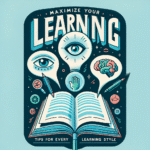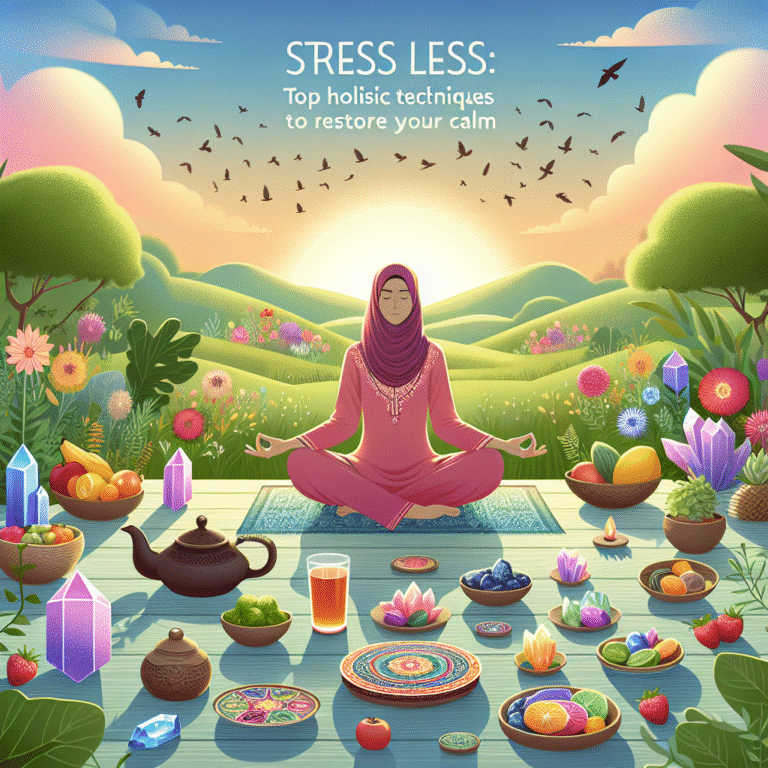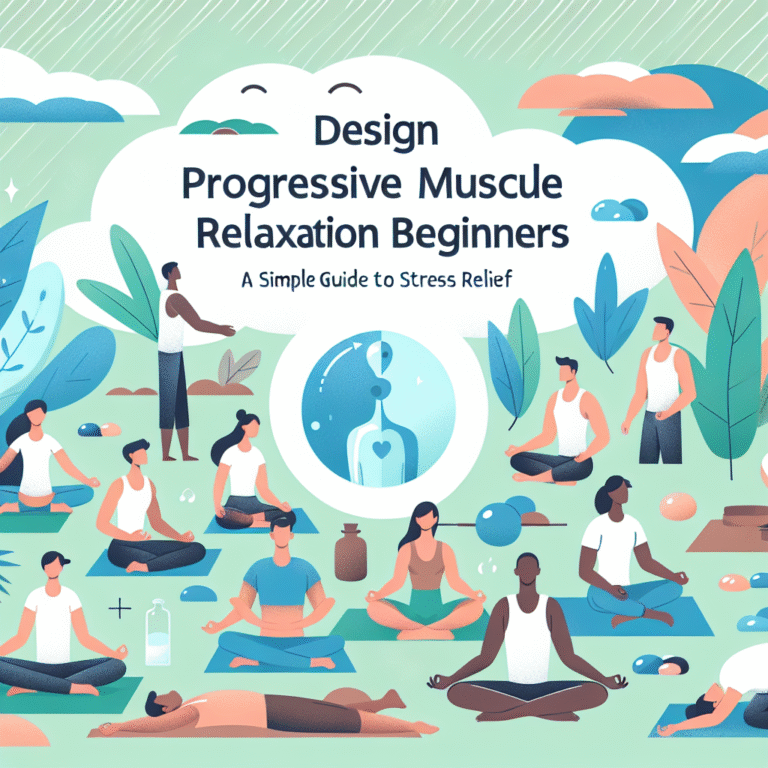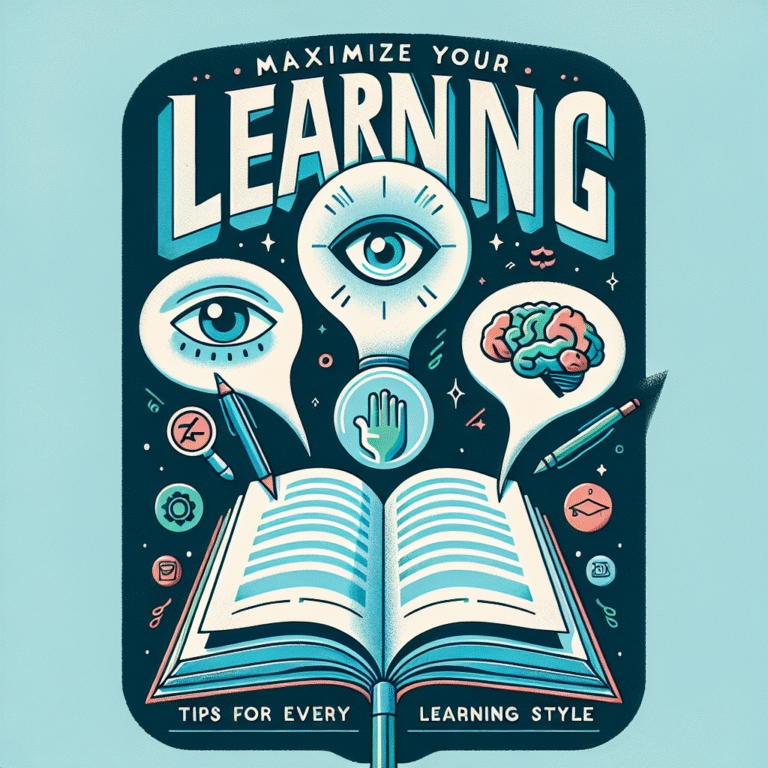
The Art of Letting Go: Integrating Progressive Muscle Relaxation into Your Daily Routine for Ultimate Peace of Mind
Introduction
Imagine walking through a quiet forest, the gentle rustling of leaves barely breaking the silence. As you breathe in the crisp air, you feel the heaviness in your shoulders begin to dissolve. This image encapsulates The Art of Letting Go: Integrating Progressive Muscle Relaxation into Your Daily Routine—a practice that invites tranquility, reduces stress, and enhances overall well-being.
In today’s fast-paced world, many individuals grapple with tension and anxiety. Whether it’s the pressure of work deadlines, family responsibilities, or simply the chaos of daily life, the modern individual often finds it challenging to unwind. This is where Progressive Muscle Relaxation (PMR) shines as a beacon of hope; not only does it help to reduce physical tension, but it also promotes mental clarity.
In this in-depth article, we explore the transformative power of integrating PMR into your daily routine. Read on for invaluable insights, practical tips, and inspiring case studies that will entice you to embrace The Art of Letting Go fully.
Understanding Progressive Muscle Relaxation
What is Progressive Muscle Relaxation?
Progressive Muscle Relaxation is a technique developed by psychiatrist Edmund Jacobson in the 1920s. The process involves tensing specific muscle groups and then slowly relaxing them, with the objective of fostering a deep state of relaxation. By tuning into the distinction between tension and relaxation, individuals can develop a heightened awareness of their bodies, ultimately promoting a sense of serenity.
The Science Behind PMR
Research shows that PMR can significantly reduce stress, lower blood pressure, and alleviate symptoms of anxiety and depression. A study by the University of California found that participants who practiced PMR showed a marked reduction in cortisol levels, the hormone responsible for stress. Additionally, regular practice of PMR is associated with improved sleep quality—a crucial component in maintaining overall health.
Why Letting Go Matters
The Art of Letting Go is essential for maintaining mental health and achieving a balanced, fulfilling life. The act of releasing built-up tension and stress is not merely beneficial for comfort; it can significantly impact productivity, relationships, and physical health. PMR offers an effective means to achieve this release, making it a key component in daily self-care.
Integrating PMR into Your Daily Routine
Evening Wind Down: Make PMR a Bedtime Ritual
Creating a calming evening routine is crucial for a peaceful night’s rest. Here’s how to seamlessly integrate PMR into your evening routine:
- Set the Scene: Dim the lights, eliminate distractions, and find a comfortable space where you can lie down or sit quietly.
- Deep Breathing: Start by taking a few deep breaths. Inhale through your nose, feeling your abdomen expand, and exhale slowly through your mouth.
- Begin PMR: Start with your toes, tensing the muscles for five seconds, then releasing. Progressively work your way up through your body—ankles, calves, thighs, abdomen, arms, and neck—tensing and relaxing each muscle group.
This ritual can help redirect your focus from the stresses of the day and promote relaxation, paving the way for restful sleep.
Midday Respite: Quick PMR Breaks
If your day is filled with meetings, phone calls, and deadlines, consider incorporating brief PMR sessions. Here’s a simple routine:
| Time | Activity | Description |
|---|---|---|
| 2:00 PM | Stretch & Breathe | Stand up, stretch your arms overhead, and take three deep breaths. |
| 2:05 PM | Tension Release | While seated, clench your hands into fists for five seconds, then release. |
| 2:10 PM | Mindful Pause | Close your eyes for two minutes, focus on your breath, and scan your body for any tension, consciously relaxing where needed. |
These short breaks rejuvenate your mind, reduce physical strain, and enhance your focus.
Morning Motivation: Start With PMR
Begin your day with PMR to set a positive tone. Here’s a quick morning routine:
- Gentle Awakening: Before you get out of bed, take a moment to stretch gently.
- Morning PMR: While lying in bed, begin with your toes and follow the full PMR cycle.
- Visualize Your Day: After completing PMR, spend a minute visualizing a productive and calm day ahead.
This practice not only helps in reducing morning stiffness but also enhances your mental resilience for the challenges the day may bring.
Case Studies: Real-Life Applications of PMR
Case Study 1: Sarah’s Journey Through Anxiety
Sarah, a 32-year-old marketing manager, struggled with anxiety that affected her work performance and personal relationships. After a doctor recommended PMR, Sarah integrated it into her morning routine. Within a few weeks, she noticed significant improvements: her anxiety levels diminished, her sleep quality improved, and she felt more equipped to handle workplace pressures. This powerful shift exemplifies the effectiveness of The Art of Letting Go: Integrating Progressive Muscle Relaxation into Your Daily Routine.
Case Study 2: John Overcomes Insomnia
John, a 45-year-old father of three, frequently battled insomnia due to the stress of balancing work and family life. On the advice of a friend, he began using PMR as a nightly ritual. After a month of consistent practice, John reported sleeping more soundly and feeling refreshed each morning. His case illustrates how the practice of letting go through PMR can combat sleep disturbances and improve overall well-being.
Case Study 3: Maria’s Stress Reduction in the Workplace
Maria, a 28-year-old teacher, often felt overwhelmed by her responsibilities. Seeking methods to manage her stress, she turned to PMR. She started with quick PMR sessions during her lunch breaks. Over time, Maria experienced less tension and a more positive mindset. Her ability to handle challenges improved significantly, demonstrating how The Art of Letting Go can be a vital tool in high-pressure environments.
Common Misconceptions About PMR
While Progressive Muscle Relaxation offers numerous benefits, several misconceptions can deter individuals from incorporating it into their routines. Let’s clarify some of these:
1. PMR is Only for Anxiety Sufferers
While PMR is highly effective for anxiety management, it benefits anyone looking to reduce stress, improve focus, or enhance relaxation.
2. PMR Requires Extensive Time Commitment
Even short five-minute PMR sessions can be impactful. Integrating quick muscle relaxation techniques into your day is more accessible than many believe.
3. PMR is Difficult to Learn
PMR is a simple technique that can be quickly grasped through practice. There are numerous resources online that provide step-by-step guides for beginners.
4. You Must Be Fully Relaxed to Practice PMR
Embodying relaxation is part of the learning process. Engaging in PMR will help facilitate relaxation, even if it’s difficult initially.
5. PMR is the Only Relaxation Technique You Need
While PMR is an excellent tool, it can be combined with other techniques such as mindfulness meditation, yoga, or deep breathing for comprehensive stress management.
Conclusion: Embrace The Art of Letting Go
Incorporating The Art of Letting Go: Integrating Progressive Muscle Relaxation into Your Daily Routine is a transformative approach to achieving mental clarity, emotional balance, and physical well-being. The practice doesn’t just serve as a tool for alleviating stress; it fosters a deeper connection between the mind and body, encouraging individuals to be present and conscious.
As you embark on your journey of discovery with PMR, remember the value of patience and consistency. Each moment spent letting go of tension contributes to a more enriched life. So, embrace the art of letting go—your body, mind, and spirit will thank you.
FAQs
1. How often should I practice PMR?
While it can be beneficial to practice PMR daily, even a few times a week can yield positive results. Listen to your body and adjust as needed.
2. Can I practice PMR while sitting?
Yes! PMR can be performed while seated. Just ensure you’re comfortable and can fully engage in the relaxation process.
3. Is PMR suitable for everyone?
PMR is generally safe for most individuals. However, if you have specific health concerns, it’s advisable to consult with a professional before starting any new relaxation technique.
4. How long does it take to see results from PMR?
Many individuals report feeling more relaxed after their first session. For notable and lasting improvements, consistent practice over weeks or months is recommended.
5. Can I combine PMR with other relaxation techniques?
Absolutely! PMR works well alongside techniques such as deep breathing and mindfulness meditation, enhancing overall effectiveness.
By embracing The Art of Letting Go: Integrating Progressive Muscle Relaxation into Your Daily Routine, you can unlock the key to a more calm, centered, and balanced life. Start today, and enjoy the journey toward peace of mind!
















